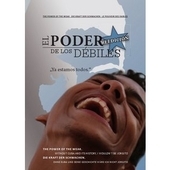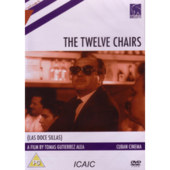Charting the progress of women in Cuba, this film is divided into two main sections – the first paints a picture of the past, both that of pre-revolutionary Cuba and of the early years of the Revolution. The second gives an up to date account of the present day, highlighting the realities of women in society.
This documentary was made to celebrate the forty-fifth anniversary of the Federation of Cuban Women (FMC) and aims to give an up close and personal look at the so-called ‘revolution within a Revolution’. It is also a follow up to the film ‘With Cuban Women’ made in 1974 by the same directors and aims to show what, if anything, has changed since those initial decades.
The film begins by providing an insight pre-1959 and looks at areas such as employment, domestic life and cultural attitudes. Whilst conceding that certain legal rights for women did exist in Cuba before 1959 the documentary shows how as a social group women were undervalued and discriminated against.
It goes on to highlight the grassroots campaigns and initiatives instigated by the Revolution that led to huge progress being made at great speed. It accredits the many achievements to various factors, including the Revolution itself, the fact that Fidel had a clear idea of the role of women, women’s support for the Revolution and the work of the FMC
Interwoven into this are clips of men talking on the streets in the earlier years, giving us an impression of the traditional views that still existed – one man is heard describing women as ‘weak, delicate like rose petals’. These clips highlight the fact that although the Revolution allowed for a great deal of progress, ‘machismo’ still persisted in society.
The second part of the film brings the issue right up to date and follows film crews out on the streets to ask people what they think about women’s position in Cuba today – this looks ‘beyond the statistics’, an attempt to get a realistic picture. The focus on interviews in everyday settings is refreshing as it departs from the usual ‘talking heads’ style of documentary making. It is also crucial as the film is concerned with finding out about cultural and social attitudes, not the formal, public sector. Themes include divorce, sex before marriage, domestic duties, and more generally gender roles and responsibilities. What is shown is that huge progress has been made in recent decades, one interviewee even claiming that rather than machismo existing, ‘hembrismo’ (female domination) does!
This documentary examines all areas of life – from the workplace to the legal system, to education, health, and sports, all framed within the context of cultural and social gender relations.
The filmmakers do not attempt to portray Cuba in a perfect light – they are not afraid to show prejudiced and traditional views and clearly state that there is still much to be done but Cuba is most definitely on the right path.













